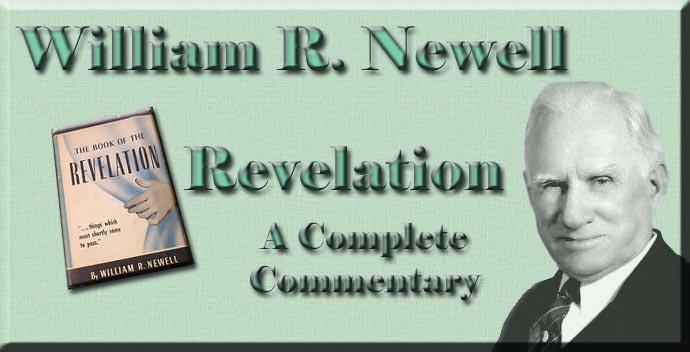
Revelation: A Complete Commentary
By William R. Newell
Appendix 2
|
“Elders” are mentioned twelve times in The Revelation. That they are individuals and not a symbolic company, is evident, it seems to me, for several reasons: 1. The Revelation is an unsealed book. When symbols or signs are shown they are plainly said to be such: e.g., chapter 12:1-3. 2. If the twenty-four elders are representative or symbolic, then the four living creatures must be also; but we all believe that four means four when applied to the living creatures; just as to the cherubim in Ezekiel 1. 3. The language used concerning the elders compels our belief that they are individuals. “One of the elders saith unto me” (chapter 5:5). “One of the elders answered” (7:13). “The twenty-four elders sit before God upon their thrones” (11:16). 4. Any one who takes the first mention of these elders (4:4) as anything other than twenty-four individuals, must have thorough proof for it, and that scriptural and not conjectural. “I saw four and twenty elders sitting” is a very definite statement indeed! We have found no Bible proof they are other than twenty-four individuals. 5. We know from 1 Chronicles 24:7-19 that the orders of the priests of Aaron’s house were divided into twenty-four courses. In the following chapter, moreover, those who “prophesied” with harps, psalteries and symbols according to their service by the hands of the king were also twenty-four (1 Chronicles 25:9-30). Furthermore, the military forces under King David were marshalled “of every course twenty and four thousand.” These changed month by month—twenty-four thousand monthly (1 Chronicles 27:1-15). Even before this (1 Chronicles 23:4) we find twenty-four thousand of the Levites who were “to oversee the work of the house of Jehovah” (although in this case the twenty-four thousand were chosen out of thirty-eight thousand—verse 3). Darby says, “The number 24 represents twice 12. One might perhaps see here the twelve patriarchs and the twelve apostles—the saints in the two dispensations.” (Coll. Writ. Proph. Vol. 11, page 22.) This is better than to make them “represent” the Church; but it leaves them symbolic rather than actual elders. We can only assume, not prove, that “the elders” are of our race at all. The cherubim are not; nor the seraphim nor the “chief princes” (Daniel 10:13). Because the term “elders” is so often mentioned (over 200 times) in Scripture, both in connection with Israel and the Church, many are willing to assume that the elders are human beings. But the elders do not testify of their own salvation at all: although they celebrate that of others, as in 5:8, 9 (R. V.). Inasmuch as God had “elders” over His people Israel, and “elders” were also to be appointed in each Church, (Titus 1:5); and inasmuch as twenty-four seems God’s governmental order, we do not see why it may not be that there are “elders” over God’s creation; that they were created so; and they are twenty-four in number; and that just as the four zoa express in heading up, the four genera of God’s creation,—beast, cattle, man and eagle (Revelation 4:7; Genesis 1:20, 24, 26), so these “elders” were created and associated by God with His government. When Christ, with His Bride, the Church, comes to reign in power, in Revelation 19, we hear no more of these twenty-four elders: for God then subjects all to the Man: Psalm 8 is fulfilled. The elders, as all other heavenly beings, have their place, but under Christ and the Church.
|
|
-
Site Navigation
 Home
Home What's New
What's New Bible
Bible Photos
Photos Hiking
Hiking E-Books
E-Books Genealogy
Genealogy Profile
Free Plug-ins You May Need
Profile
Free Plug-ins You May Need
 Get Java
Get Java.png) Get Flash
Get Flash Get 7-Zip
Get 7-Zip Get Acrobat Reader
Get Acrobat Reader Get TheWORD
Get TheWORD